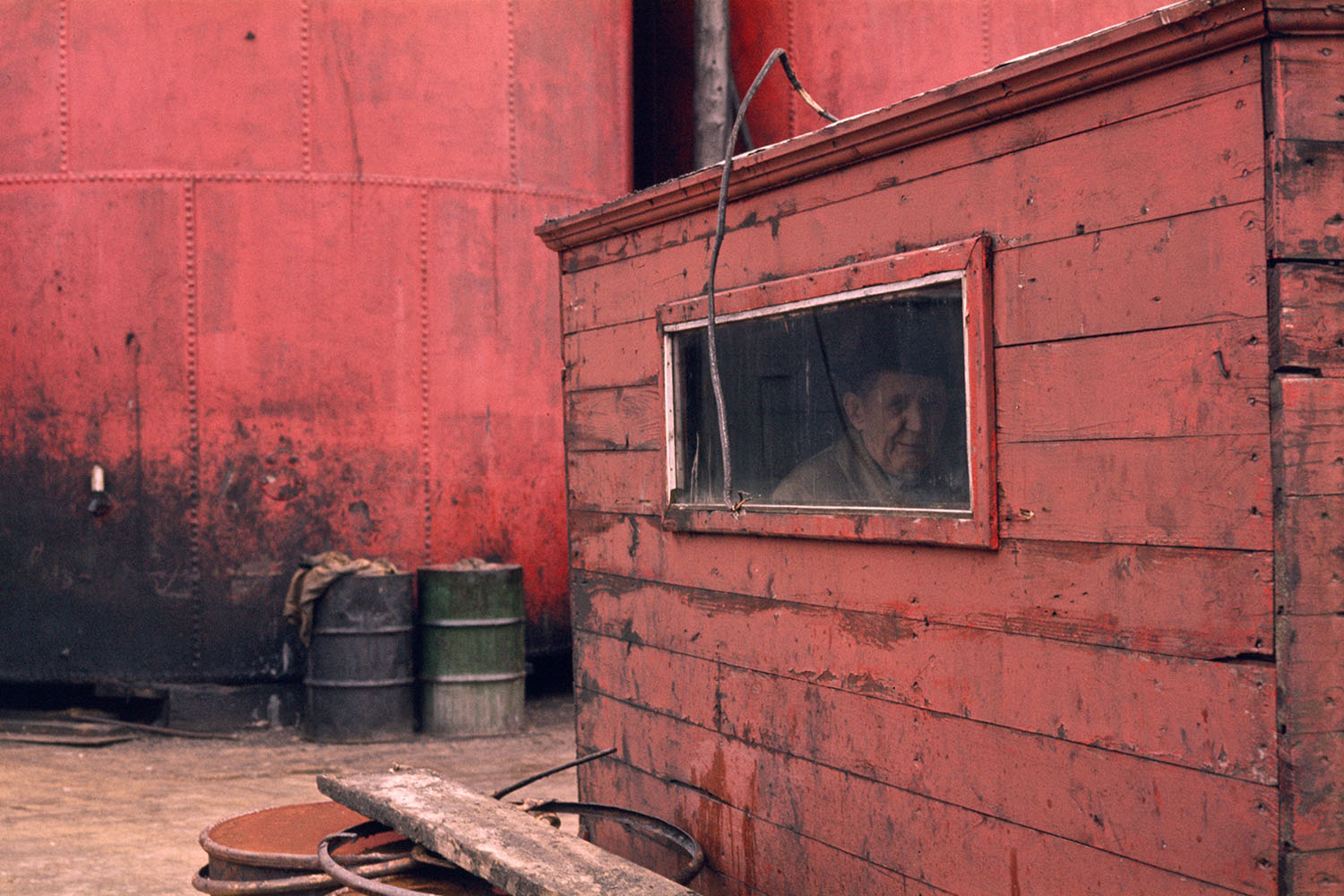
In 1967, Sam Abell rode a train from New York to Washington DC thumbing through a copy of Walker Evans’ American Photographs. He’d marvel at the level of consideration and thoughtful restraint, at the deep-felt honesty conveyed, but something was missing. The world outside was very different than the one represented in the monochrome photographs made 30 years prior.
“It was chaotic and colorful and it was moving by,” he says, “which was how I felt about my life then.”
He was on his way that day to an interview at National Geographic. It was the opening scene to a 40-year career producing one of the most remarkable, understated bodies of color documentary work, bridging the gap between editorial and fine art photography long before either was accepting of the other.
“I was known as a 35-mm photographer with a view-camera mentality,” says Abell, who is 67 now and teaches widely around the country.
His process is built on the virtue of patience. He looks for structure in a scene, starting almost with a still-life. He dwells on the parts and composes meticulously. Then he waits.
Minutes, days, weeks he waits, coming and going for months even, drafting thousands of times in his head or on film the scene unfolding. Finally it comes. He calls that “a breath of life,”— a simple gesture, a gust of wind, a shadow, a sense of mystery that once stilled, creates involvement for the viewer, that ineffable quality of Abell’s work that keeps us looking.
Having shot nearly 1000 rolls of Kodachrome a year, Abell also had to have the patience to become a serious editor of his own work. For one assignment on the life of Charles M. Russell, the “Cowboy Artist of Montana,” he made 25,000 exposures over the course of a year, eight of which were ultimately published.
“What you cared about and fought for,” he says, “was to make those eight photographs meaningful.”
What might have been true to him, and true to whatever he was documenting, however, wasn’t always what the editors at the Geographic wanted.
“Editorial photography has to be energetic and visually competitive,” he says, it competes with advertisements for attention.
“It lacked that energy,” Abell says of his work, “but I believed in the staying power of those quieter pictures.”
This belief came with a life-long commitment to the book form, one of the few connections he had to the photography world when he was growing up in Ohio.
“It was what you might call a fantasy, or a wish of mine that motivated me to go deep into these assignments,” he says. “I knew that only ten pictures would be published. I always considered that I was working on a book.”
This winter, as a testament to the longevity of that aesthetic ambiguity and quietude, Radius Books is publishing The Sam Abell Library: Life and Still Life, an encyclopedic collection of 16 volumes, four slipcases of four volumes grouped by thematic relation. The first set, the photography of places — Newfoundland, Hagi and Australia — features 140 color photographs, most of which have never been published.
Unlike his previous books where he tried to show the process of his imagery, this collection presents only final, highly considered, definitive work.
“It’s one sensibility brought forward deeply by different places,” he says. “I want it to be about Australia, but the subtext is me in Australia, me in Japan.”
Overall, it’s a thoughtful, restrained collection of essays, one that could be read on a moving train, perhaps, by an aspiring photographer who might find the impetus to go out in the world and improve upon it.
Sam Abell is a Virginia-based photographer. He spent more than 30 years shooting for National Geographic.
Eugene Reznik is a Brooklyn-based photographer and writer.
More Must-Reads from TIME
- Donald Trump Is TIME's 2024 Person of the Year
- Why We Chose Trump as Person of the Year
- Is Intermittent Fasting Good or Bad for You?
- The 100 Must-Read Books of 2024
- The 20 Best Christmas TV Episodes
- Column: If Optimism Feels Ridiculous Now, Try Hope
- The Future of Climate Action Is Trade Policy
- Merle Bombardieri Is Helping People Make the Baby Decision
Contact us at letters@time.com